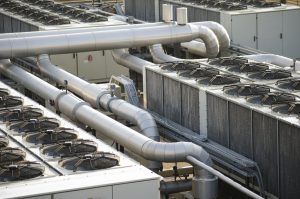A commercial grade refrigeration unit is necessary for serious restaurant needs and in order for the restaurant to meet certain FDA standards and to ensure that it passes local safety and food handling codes. Walk-in refrigeration equipment is the large-scale and practical solution to holding huge volumes of food and stock at safe cooling or freezing temperatures for long-term storage. Built for outstanding strength, durability, and cooling capabilities, a walk-in refrigeration box is available both with and without the refrigeration boxes attached, giving you the chance to make your own custom storage area with the combination of equipment you want to use.
Understanding the Need for Commercial Refrigeration

All refrigeration units have the ability to keep food chilled and safe, with an insulated interior and durable, stainless steel exterior. All refrigerators involve ventilation for the compressor, which may be located on the top, the bottom or the side of the unit. Refrigerators are designed to maintain temperatures between 34°F and 40°F, while commercial freezers must stay between -10°F and 0°F.
In the restaurant business, it is beneficial to not only keep certain foods refrigerated but also to keep a wide variety of other items, such as certain food prep dishes, some canned foods, and other items, cool. The quality of the food served is maintained and helps the restaurant adhere to safe food handling regulations.
Walk-in Refrigerator units are designed to meet the unique needs of companies in the food handling industry. These units are packed with features that make them optimal for a restaurant setting. The cooling systems are so powerful that the internal temperature rarely fluctuates more than a couple of degrees.
Types of walk-in refrigerators we sell in Manhattan
There are two types of walk-ins: prefabricated and built-in.
- Prefabricated units come with urethane panels that are sized according to the specifications of the product or built to order depending on the manufacturer. They provide many great benefits including easier expansion and relocation.
- Built-in units are also very popular and often consist of insulation that is covered with structural tiles on the walls and floors. These units can be built to meet the exact needs of your space but can’t be moved or changed as easily as prefabricated units.
Outdoor vs. Indoor Refrigeration
Among the first decisions you will have to make is whether to buy indoor or outdoor walk-in refrigerator. Choosing the right kitchen equipment for any restaurant involves having an in-depth understanding of space utilization, how much food must be refrigerated at any given time, and the footfall expected on a daily and weekly basis.
Advantages of an Outdoor Walk-In Refrigerator
- Selecting an outdoor walk-in refrigerator means you’ll save precious space on the inside of your restaurant.
- The location of the condenser can be essential. Refrigeration systems work by removing hot air from inside the refrigerator and blowing it outside the unit. On an outdoor walk-in, the hot air goes directly outside.
- With professional help, delivery and installation can be quick
- Food deliveries are easier to an outdoor unit with a door that opens to the outside
Some of the disadvantages associated with the outdoor unit are:
- Construction of a door in the wall or having to have employees walk outside
- Less energy efficient than indoor units
- Requires additional components to protect against weather and crime
- Local building codes may mandate additional components
Advantages if an Indoor Walk-In Refrigerator
- Easy access to the contents
- Energy efficient
- Easy maintenance
Disadvantages
- Takes up interior space
- May require a reinforced interior floor
- Self-contained units heat up your building, increasing cooling costs in the summer
Other factors to consider when selecting the walk-in refrigerators
Size
The decision is based on which food legally requires refrigeration and the quantity of these items to have on hand on a daily basis and the space they take up. One thing to keep in mind when looking at walk-in dimensions is that they measure the exterior, not the interior. The length and width of the interior will be slightly less than that of the exterior.
Insulation Types
The two methods of insulation are foamed-in-place and laminate. Laminate is preferable for customized walk-ins since it can be cut to the exact size you need. If you’re buying a walk-in from a well-known Manhattan manufacturer, there is little performance difference between the two. Foamed-in-place insulation is preferred in hotter climates because laminate can pull away from the foam under hot and humid conditions.
Refrigeration Systems
Refrigeration systems are either remote or self-contained. Remote condensing models are split-systems with an outside condensing unit. These can be placed on the roof of the walk-in, the roof of your building, or next to your building on a platform.
Smaller walk-in typically require a 1/2 hp compressor to hold temperatures at or below 41 degrees Fahrenheit. The larger the walk-in the more powerful the refrigeration system will need to be.
Flooring
A walk-in refrigerator can be purchased with or without built-in flooring. Built-in floors are ideal, because they’re insulated and will provide better energy-efficiency.While there are lots of options for walk-in refrigerators, we’re confident that if you pay careful attention to these critical areas, you’ll make a great buying decision.
Get in Touch Now
Contact our team today to discuss your indoor or outdoor refrigeration needs in Manhattan. Call us now at (718) 749-9797.